Foams Python Package
I have developed a Sage class for foams, colorings, and Robert-Wagner evaluation. See it on GitHub
What is a foam?
Motto: Surfaces are to circles as foams are to trivalent graphs.
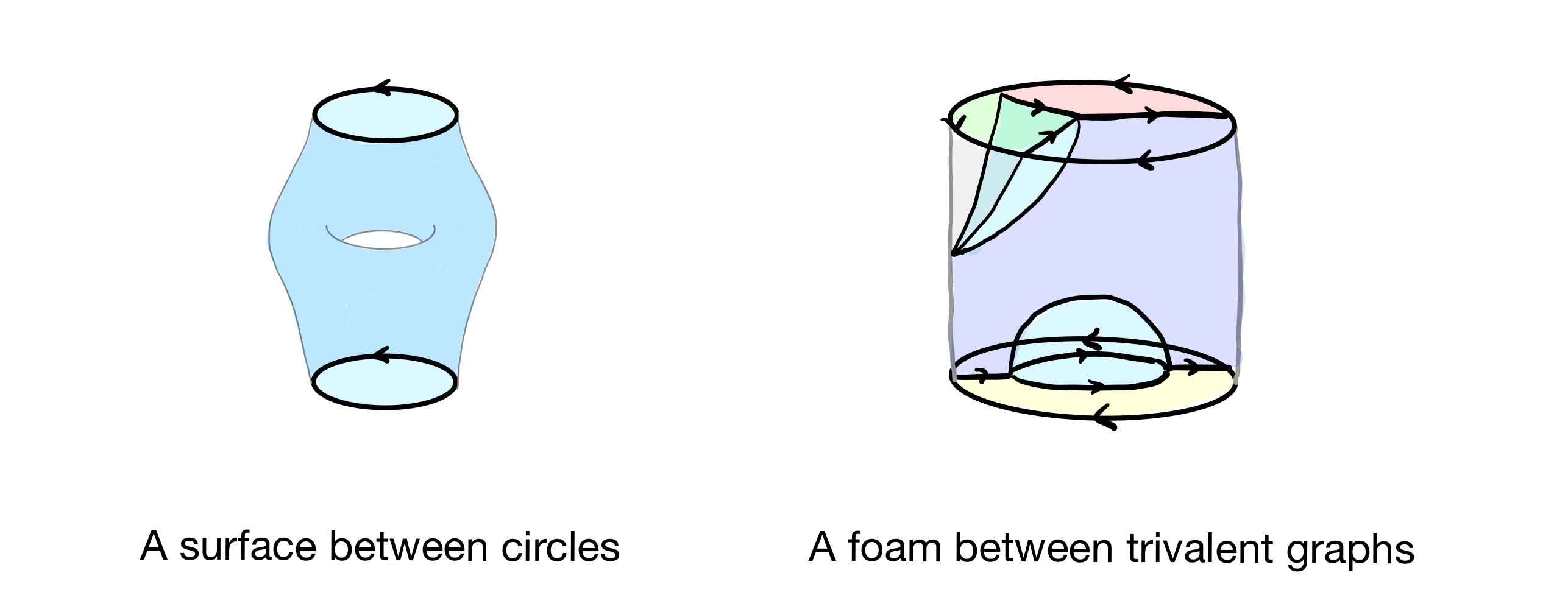
Just like a surface locally looks like a plane, a foam locally looks like one these:

They are called foams because they kind of resemble soap bubbles coming together.

Here are some examples:

The first one is called the theta foam: if you look at it from the side it resembles the greek letter θ
Notice that (mathematical) foams have integers on their faces. These are called thicknesses. They may also have polynomials on the facets:
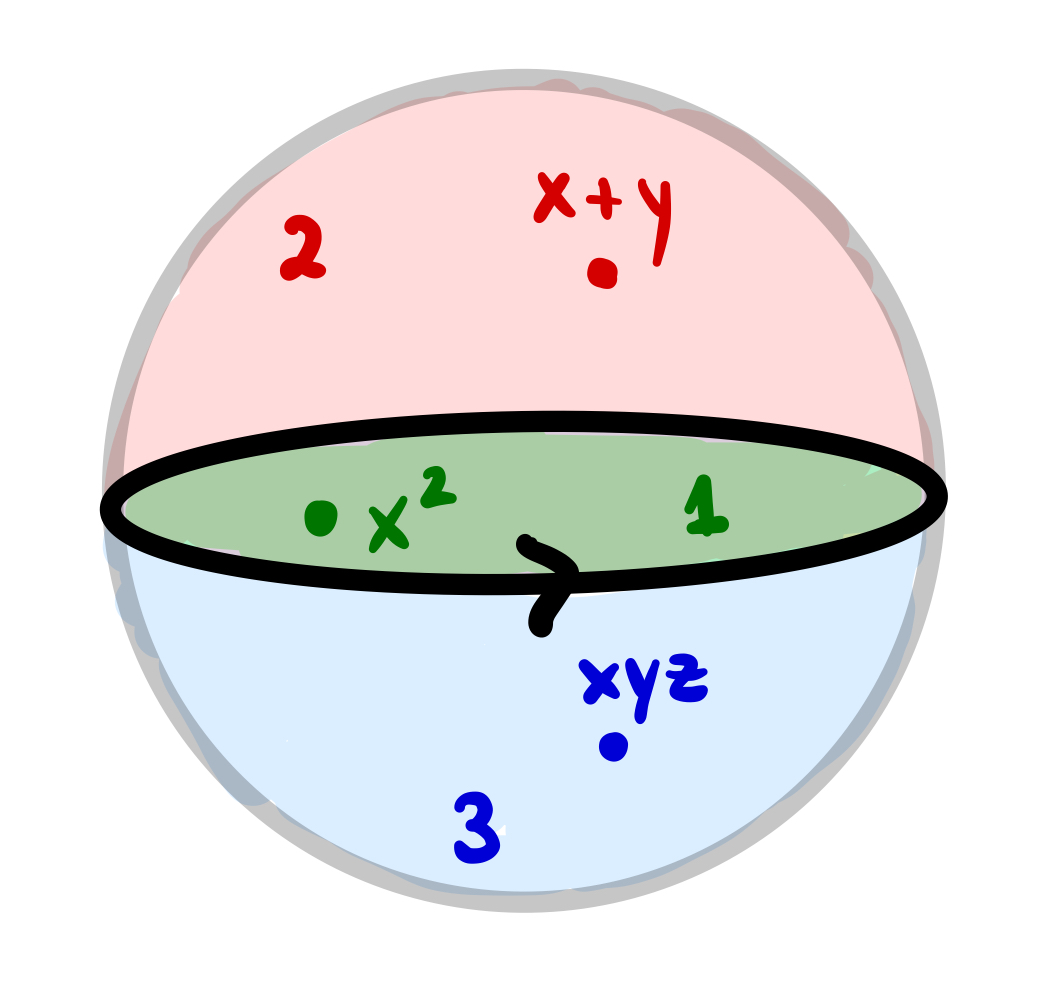
What this package does
The new Foam class allows you to define such foams. For the example above, all we need to do is define a SimplicialComplex representing the theta foam, and assign thicknesses, decorations, and the orientation around the binding:
For graphs, there is a notion of graph colorings. Robert and Wagner proposed a notion of a foam coloring. Here is an example:

Notice that a facet of thickness t has exactly t colors, and two facets coming together into a third satisfy a "flow condition":
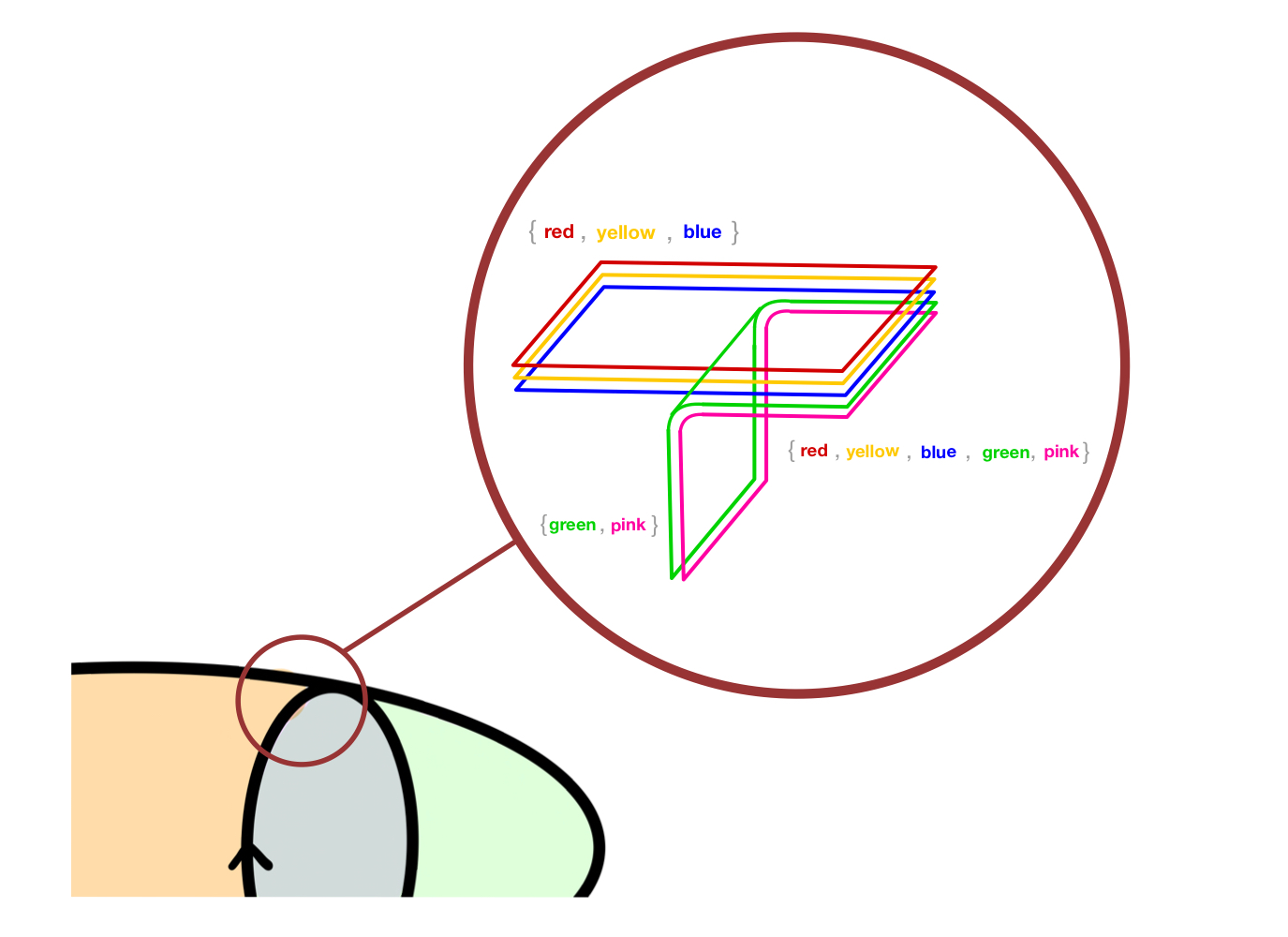
The Foam class has a method to enumerate colorings using N colors. For example, the following foam has 6 colorings using three colors (red, yellow, blue):
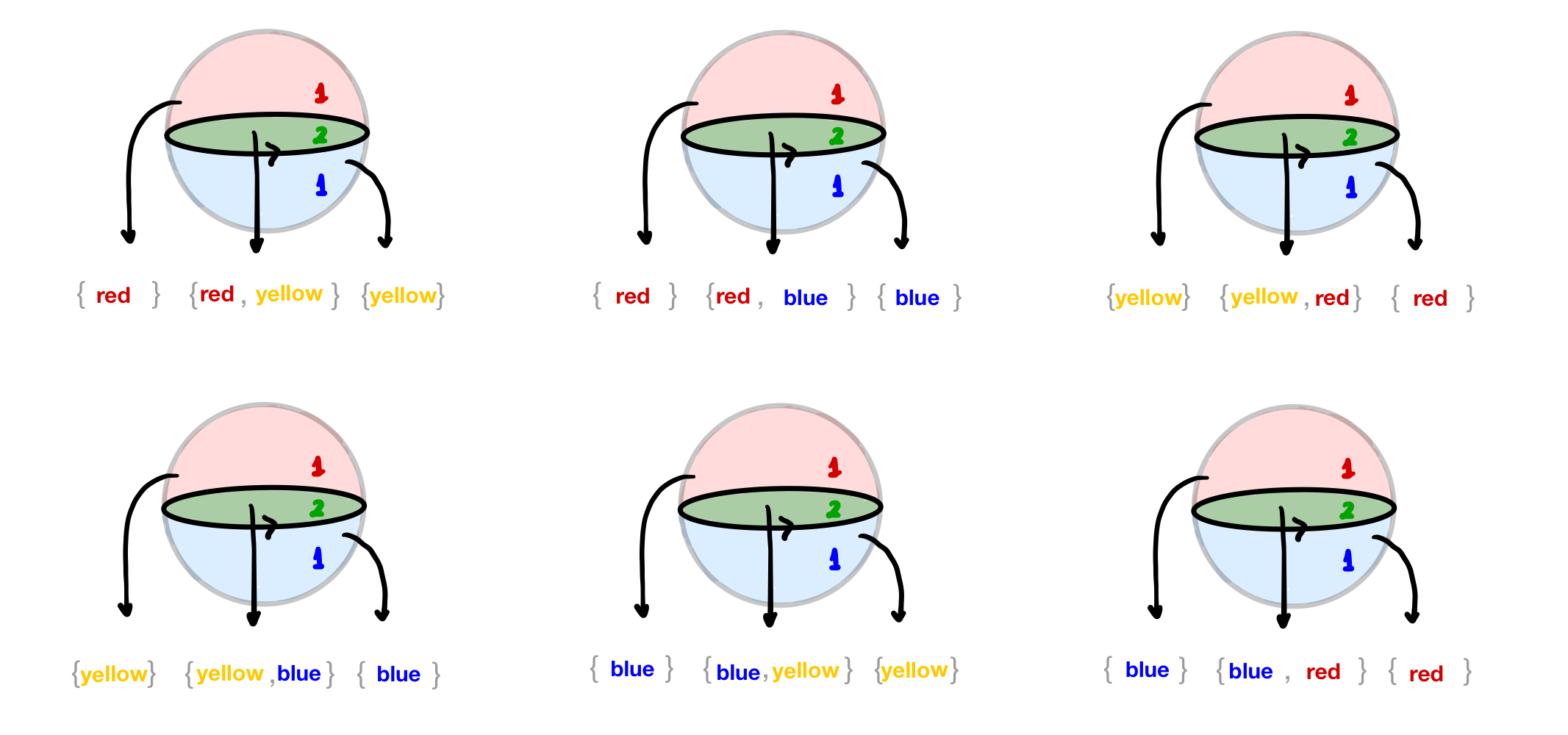
We can easily get these colorings on Sage:
Robert and Wagner defined an evaluation formula that takes a foam and a coloring and it gives a quotient of polynomials, for instance:

Adding all of the contributions for each coloring of a foam should yield a quotient of polynomials. One of the miraculous properties of this evaluation is that, in fact, it returns polynomials:
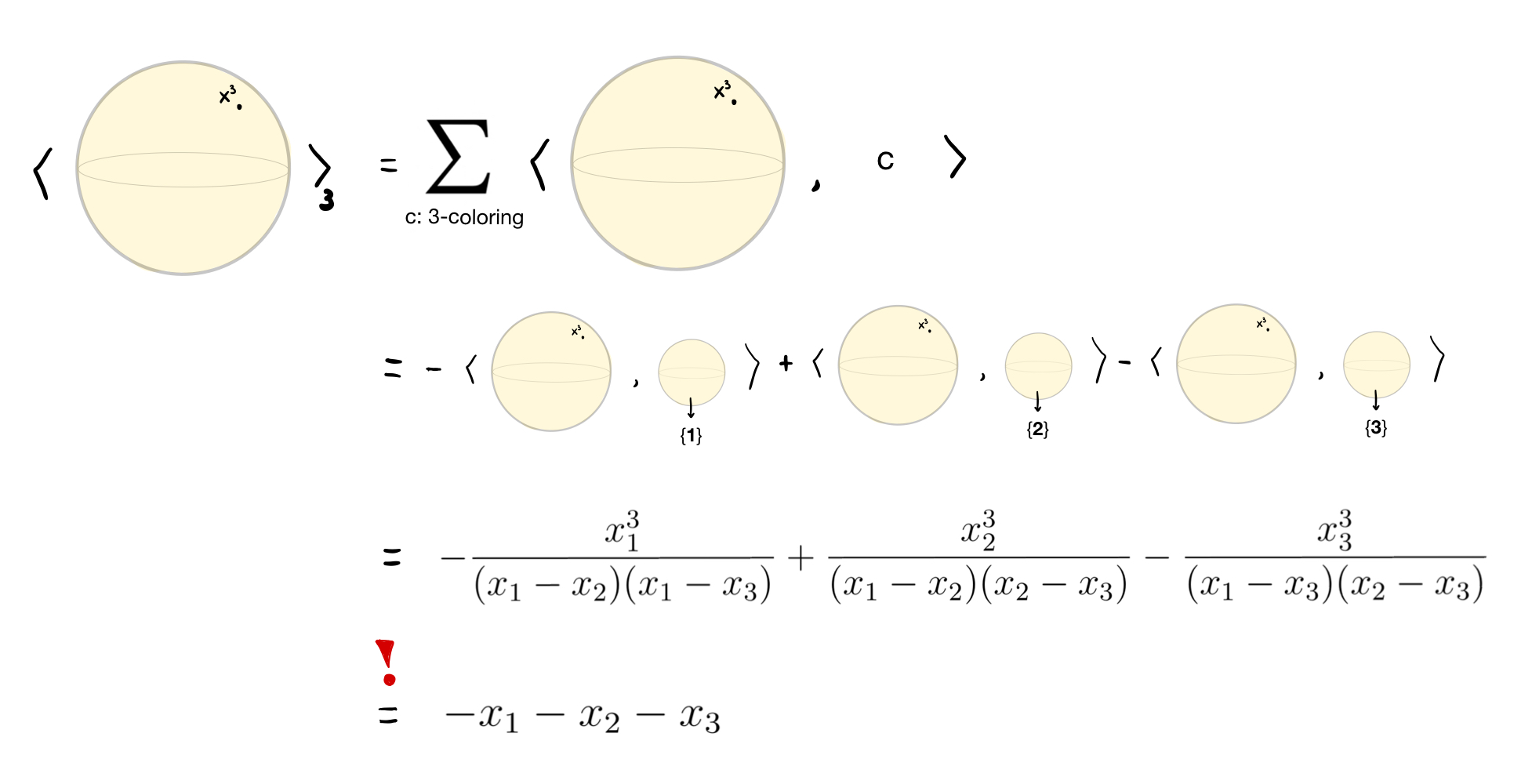
We can confirm this in Sage:
Efficient coloring enumeration
Previous implementations of the Robert-Wagner formula struggled with as few as 4 colors and a few facets. Our new approach transforms the foam coloring problem into an Integer Linear Programming (ILP) problem, which allows us to find colorings with up to 9 colors if the foams are not too large. Take the following foam:
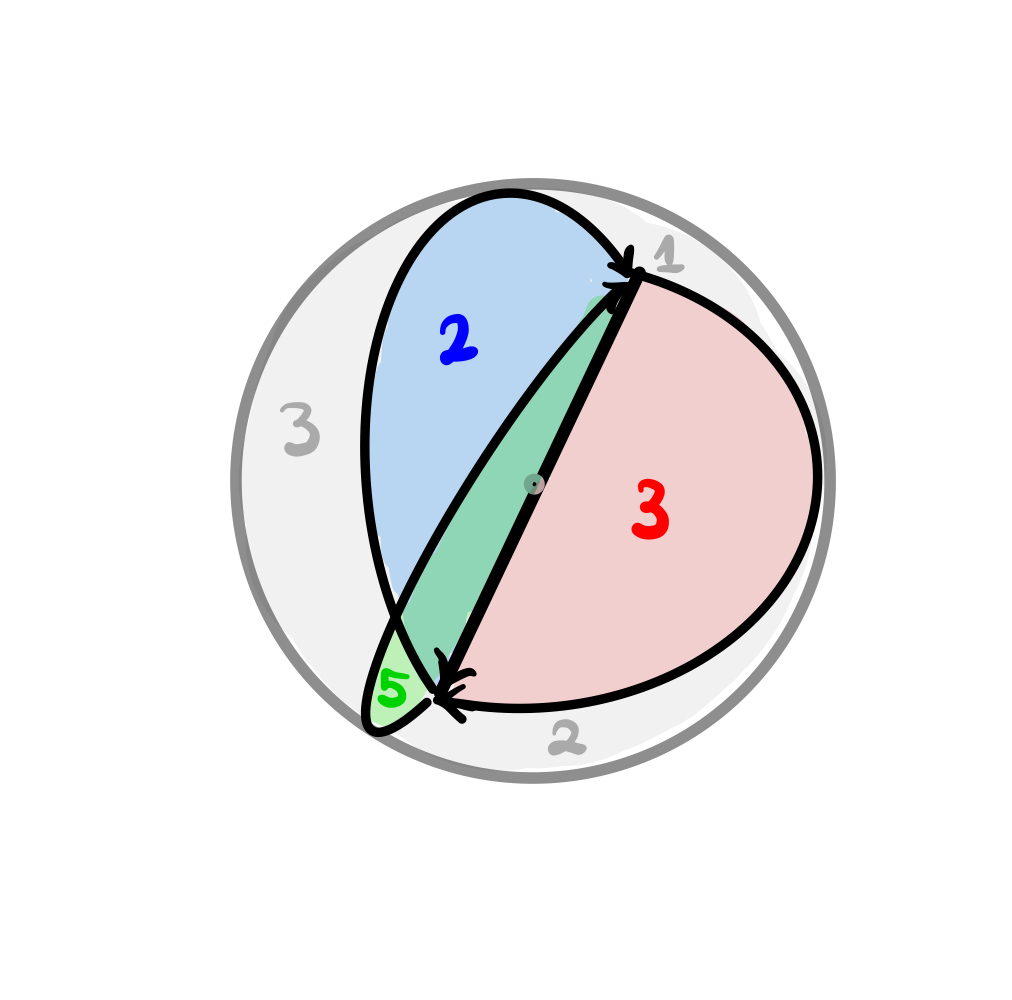
Let's define it in Sage and find its colorings using 9 colors:
The ILP solver finds a single coloring each time, but then the algorithm excludes that single coloring and calls the ILP solver again. Since there are relatively few colorings, the time complexity comes down to the complexity of the ILP solver, which is highly optimized.
Early access
If you would like early access to this package (which contains other features, such as constructor methods and a foams catalog), please contact me.